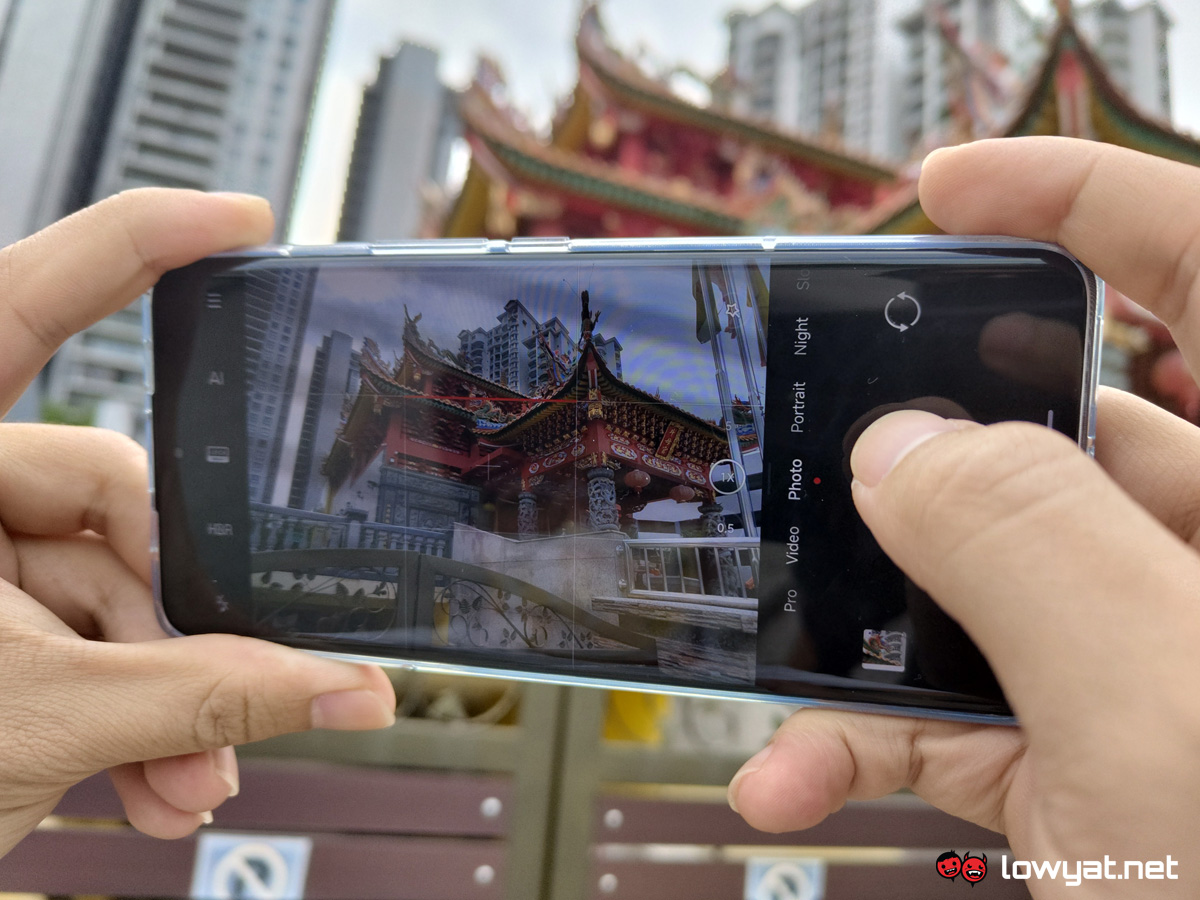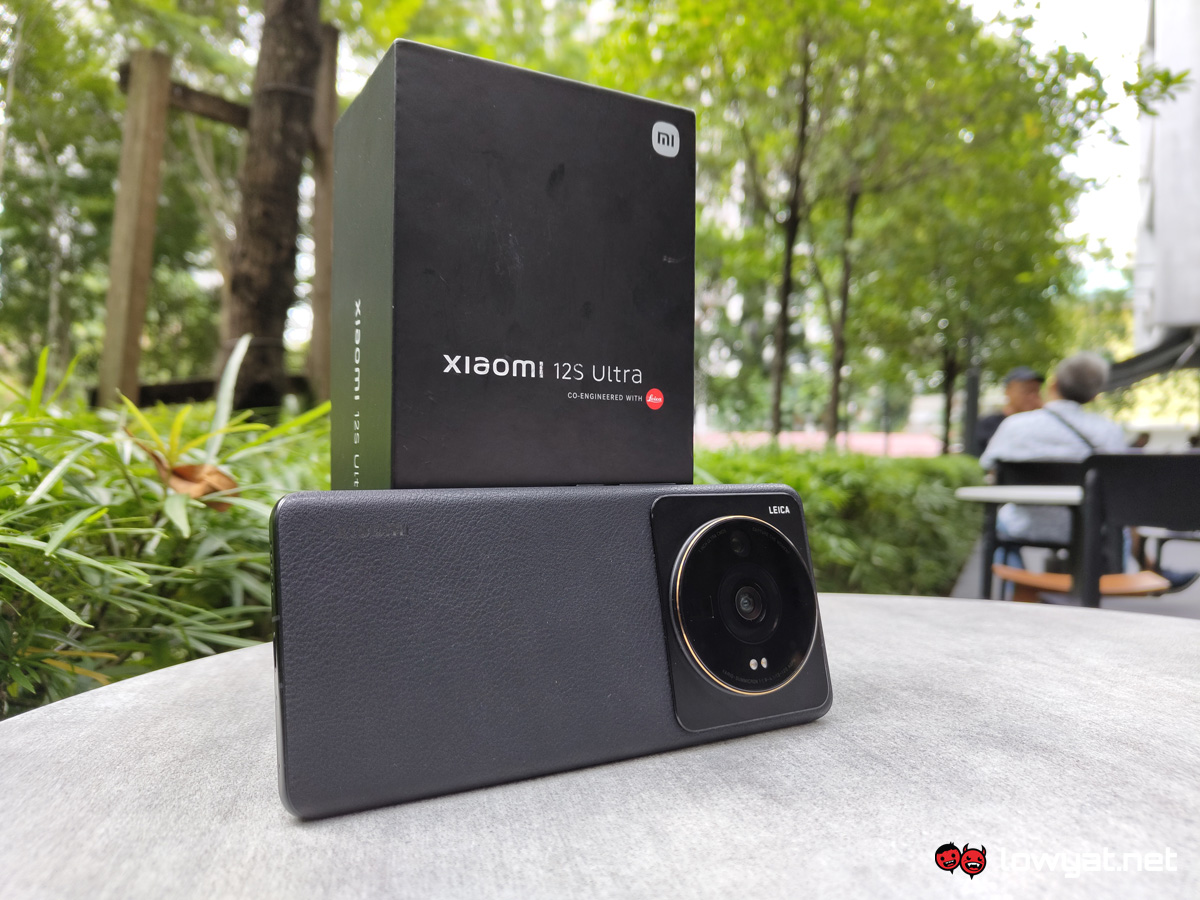So why let us sample it? That’s because the main highlight of the experience is not the Xiaomi 12S Ultra in its entirety, but rather its Leica-enhanced primary camera system. In other words, the brand is merely giving us a taste of what to expect from its future flagships that will eventually make their way to our shores. In hand, the feel of the Ultra variant is similar to any other smartphone of its class, such as the Samsung Galaxy S22 Ultra and its own predecessor, the Xiaomi 11 Ultra. It is hefty but still comfortable enough to be held in one hand, and the Leica camera inspired leather-like texture on its rear panel helps to provide some added grip – on top of giving the phone a very premium look. And while we’re still on the subject of design, I’d like to add that the camera array on the back of the 12S Ultra can be a bit jarring due to its humongous size. Personally, I don’t mind it that much but its huge size is likely not going to be everyone’s cup of tea. Oh, and it is also worth noting that the one-inch 50.3 MP primary sensor is actually situated on the left of the centre camera, which is where the 48 MP ultra-wide is housed. The 48MP periscope telephoto, on the other hand, is located at the bottom. In terms of performance, the Xiaomi 12S Ultra doesn’t disappoint, at least in my personal opinion. The one-inch 50.3 MP Sony IMX 989 is so far one of the best mobile phone sensors around, and is capable of naturally capturing tremendous amounts of detail, colour and light with little to no traces of artificial enhancements through AI or software. So much so that I feel the shots taken directly by the camera in the default Leica Authentic or the Leica Vibrant colour profiles are good enough on their own without any edits done in post.
That being said, the quality of the phone’s onboard telephoto and ultra-wide cameras doesn’t stray too far off either. While the two can’t directly compete with the primary sensor, they’re good enough to complement it in their own specialised ways. Unfortunately, the hands-on session with the Xiaomi 12S Ultra was done during daytime, so I wasn’t able to fully evaluate the performances of both supplementary cameras under low-light conditions. Additionally, the telephoto features optical zooming of up to 5x and comes with optical image stabilisation (OIS), whereas the ultra-wide comes with a field-of-view of 128-degrees.
Meanwhile, shooting videos with the smartphone is equally delightful. Thanks to the onboard Qualcomm Snapdragon 8 Plus Gen 1 chipset, the Ultra is capable of shooting videos at up to 8K resolution at 24 frames per second (fps), 4K at up to 60 fps, and as low as 720p at a whopping 3840fps for slow-mo footage. Video stabilisation via the built-in OIS is already pretty impressive, though you could choose to further remove bumps and shakes by activating the Super Steady Mode, at the cost of reduced image quality. Besides that, you can expect the usual modes and enhancements that are commonly found in most smartphone camera apps such as Portrait, Panorama, Professional, the aforementioned Slow-Mo, and so on. There’s also the Leica watermark mode which appears as a white border at the bottom of every photo that displays the phone model, focal length, aperture, shutter speed and ISO levels used for the capture, as well as the date and time. This mode is merely for bragging rights more than anything else, especially when you’re sharing your shots on social media. All-in-all, the camera setup on the Xiaomi 12S Ultra definitely impresses. But is the experience close to using an actual Leica camera – say, the Q2 – which is often triple or even quadruple the price of a flagship smartphone? Honestly, not really, but it sure isn’t too far off in terms of image quality. Alas, the phone or its siblings are a set of devices that we won’t be able to enjoy in our region – that is, unless you decide to import it.
Regardless, the company seems to be hinting that we’ll definitely be getting something equivalent or even better, though don’t expect such devices to arrive too soon. This is likely referencing the supposedly upcoming Xiaomi 13 series, which are expected to debut in China towards the end of the year – provided that Xiaomi sticks with its usual December launch window for its next generation flagships.


